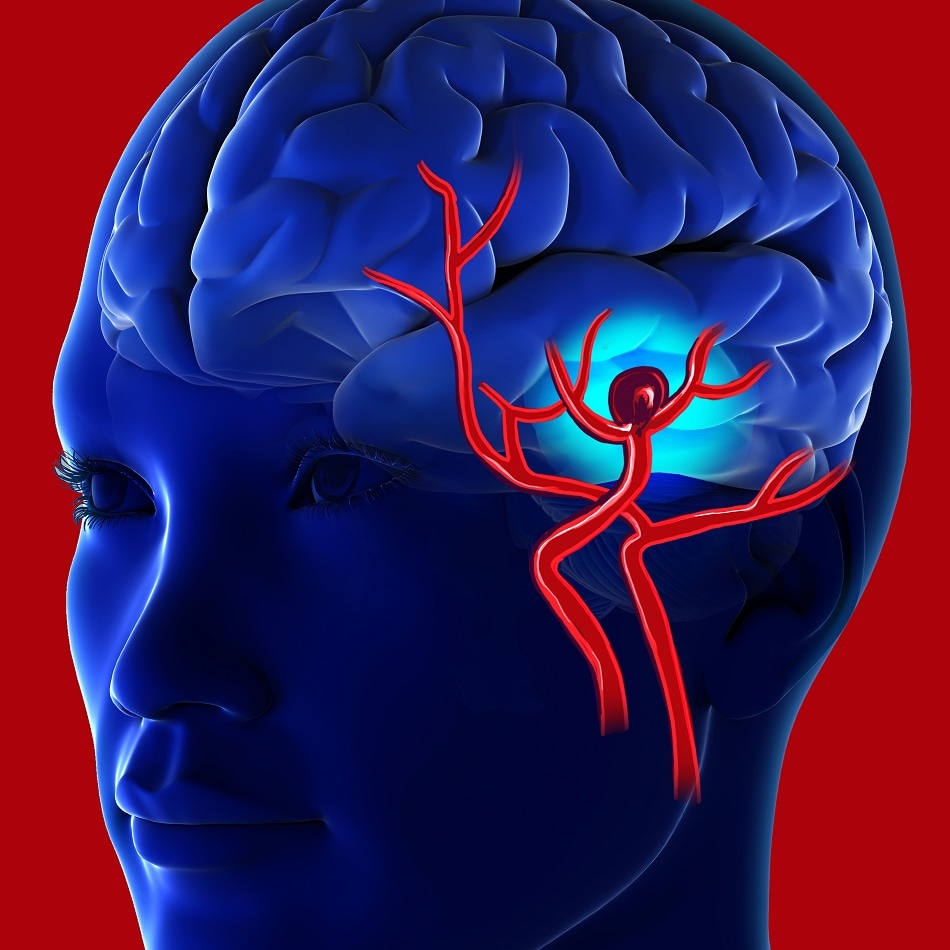
Image credit : Romanova Natali/Shutterstock.com
Artificial Intelligence could soon enhance a doctor’s ability to effectively detect and diagnose brain aneurysms, strokes, and other head injuries. One of the algorithms that are behind the pioneering approach using AI software was first developed by a collaborative team of medical experts and computer scientists at Stanford University, California.
In a paper outlining the development of the technology, published in JAMA Network Open, the researchers detail how the AI tool can call attention to areas of the brain that are damaged or at risk. During the tests, clinicians were able to accurately determine six more aneurysms over 100 scans that contained brain anomalies. The program also helped raise consensus among clinicians consulting over the data.
There's been a lot of concern about how machine learning will actually work within the medical field. This research is an example of how humans stay involved in the diagnostic process, aided by an artificial intelligence tool.
Allison Park, A Graduate Student in Statistics at Stanford and co-lead author of the paper
Park and her colleagues developed the system around the HeadXNet algorithm bringing together their expertise in radiology, machine learning, and neurosurgery. While the results of the study made for encouraging reading the researchers are clear to point out that the technology is not designed to usurp a clinician’s expert advice, and further investigation on the generalization and stability of the tool is needed. Furthermore, as scanning hardware can differ from hospital to hospital the team must also mitigate for varying protocols.
The team plans to continue the development of their work by taking into account multicenter collaboration as well as the complexity faced when examining brain scans.
“Searching for an aneurysm is one of the most labor-intensive and critical tasks radiologists undertake,” stated Kristen Yeom, MD, associate professor of radiology at Stanford and co-lead author of the paper. “Given inherent challenges of complex neurovascular anatomy and the potentially fatal outcome of a missed aneurysm, it prompted me to apply advances in computer science and vision to neuroimaging.”
What’s more, in addition to Stanford’s ground-breaking approach, an algorithm engineered by scientists at UC San Francisco and UC Berkeley has also demonstrated the ability to detect very small hemorrhages and abnormalities on the brain. The latest findings, recently published in the Proceedings of the National Academy of Sciences (PNAS) , outlines how the team trained a machine-learning tool, known as PatchFCN, by feeding it over 4000 images of CT head scans. Subsequently, the team carried out testing of the algorithm on 200 random images and the AI was able to identify and perform at the level of accuracy equivalent to four radiologists.
We wanted something that was practical, and for this technology to be useful clinically, the accuracy level needs to be close to perfect.
Esther Yuh, MD, Associate Professor of Radiology at UCSF and co-author of the study
One of the most difficult challenges the UCSF and UC Berkeley team faced was the same everyday task radiologists are faced with – being able to reach a conclusion on whether an entire 3D stack of 30 images is normal. “Achieving 95 percent accuracy on a single image, or even 99 percent, is not OK, because in a series of 30 images, you’ll make an incorrect call on one of every 2 or 3 scans,” said Yuh. “To make this clinically useful, you have to get all 30 images correct – what we call exam level accuracy. If a computer is pointing out a lot of false positives, it will slow the radiologist down, and may lead to more errors.”
Moreover, many of the abnormalities can be very small and on black and white scan images this makes it extremely hard to disseminate the information with the requisite speed and precision. “The hemorrhage can be tiny and still be significant,” said Pratik Mukherjee, MD, professor of radiology at UCSF. “That’s what makes a radiologist’s job so hard, and that’s why these things occasionally get missed. If a patient has an aneurysm, and it’s starting to bleed, and you send them home, they can die.”
Yuh and her team believe that their algorithm could assist clinicians and radiologists but indicated all processed images would still need verifying by an expert human-eye. Therefore, the next step is introducing the technology into an actual clinical practice and they have already begun applying the program to CT scans from trauma centers across the US.
In the future, AI systems like the ones developed by Stanford, UCSF, and UC Berkeley could be extended to identify other diseases and conditions in the body. While a major challenge remains the integration of these tools into existing hardware in clinics, researchers are positive that progress can be made. Thus, doctors around the world could have increased access to pioneering, advanced technologies that could save even more lives every day.
Disclaimer: The views expressed here are those of the author expressed in their private capacity and do not necessarily represent the views of AZoM.com Limited T/A AZoNetwork the owner and operator of this website. This disclaimer forms part of the Terms and conditions of use of this website.